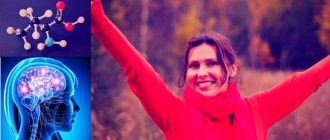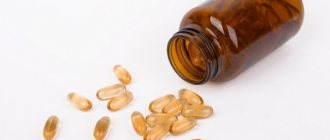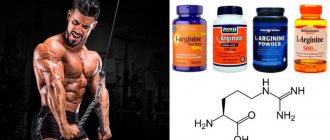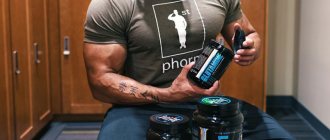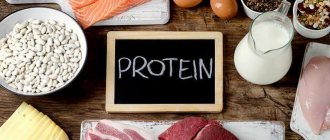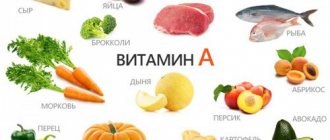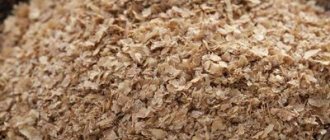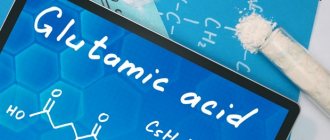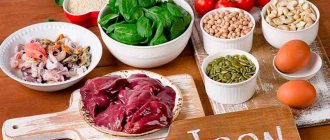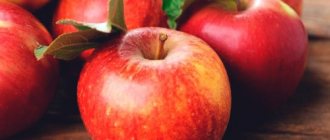© Zerbor — depositphotos.com
Share:
Valine is an aliphatic (branched) amino acid, which is part of 70% of proteins, but is not synthesized by the body. Acts as a matrix for the synthesis of pantothenic acid (vitamin B5) and penicillin (valinomycin). The importance of this amino acid is difficult to overestimate: the body is not able to fully function without the L (L) and D (D) isomers of valine, since they supply the energy used in muscle tissue and are responsible for the ability of the body to move in space.
Characteristic
Valine was first obtained in the laboratory in 1901 by the German chemist Emil Fischer from the hydrolysis of casein. The amino acid was named after valerian because it is involved in stimulating the body's activity, thereby maintaining its structural integrity.
According to its characteristics, valine resembles leucine and isoleucine. This amino acid is hydrophobic, therefore almost inert to chemical and biochemical processes in the body, but it determines the three-dimensionality of proteins and can absorb other amino acids.
Valine is also called a glucogen amino acid for the ability of its isomers to be transformed in the liver into glucose - the most accessible source of energy for muscles. In parallel, vitamin B3 is synthesized from valine isomers.
© designer491 — depositphotos.com
Pharmacological properties
The very name of the amino acid suggests that its main property is its effect on the central nervous system with the regulation of the processes of inhibition and excitation.
In addition, she:
- exhibits a stimulating effect;
- enhances regeneration processes in the body;
- increases tissue resistance to external influences;
- resists stress and mental strain;
- actively counteracts the development of alcohol and drug addiction;
- balances metabolism, reducing appetite and promoting weight loss;
- reduces the threshold of pain sensitivity, especially when exposed to temperature;
- regulates the production of growth hormone, hemoglobin, nitrogen concentration in the body;
- improves the condition of common sclerosis.
Tyrosine
Tyrosine, which belongs to the class of non-essential amino acids, takes an active part in regulating mood, so a deficiency of this amino acid leads to the development of depression.
The benefits of tyrosine
- Appetite suppression.
- Helps reduce fat deposits.
- Activation of the production of melatonin, a hormone responsible for regulating circadian rhythms.
- Improving the function of the adrenal glands and the thyroid gland.
- Elimination of chronic fatigue.
- Increased mood.
- Relieving headaches.
- Reducing the manifestation of allergies.
- Normalization of metabolism.
- Improved cognitive performance.
The following signs indicate tyrosine deficiency:
- lowering blood pressure;
- low body temperature;
- the development of restless legs syndrome, in which the patient experiences discomfort in the lower extremities, appearing at rest mainly in the evening or at night.
What foods contain tyrosine?
The daily requirement for tyrosine is 500 – 1500 mg (it all depends on the intensity of physical and mental stress).
Products containing tyrosine:
- peanut;
- legumes;
- meat;
- fish;
- wheat;
- seafood;
- eggs;
- seeds;
- dairy products;
- almond;
- cottage cheese;
- avocado;
- cheese;
- cereals;
- bananas.
Daily requirement
A person needs about 2-4 g of valine per day. The exact dosage is calculated using the formula: 10 mg of amino acid per 1 kg of body weight. If it is necessary to increase the dose, not 10, but 26 mg of the biological substance is taken as the starting point.
Remember that when taking valine preparations, any dose calculations are made by the doctor, since the compound has serious contraindications for use and can bring not only benefit, but also harm. In case of insufficiency of liver or kidney function, hemolytic anemia, diabetes, pathology of the gastrointestinal tract, the use of the amino acid is limited.
Amino acids and the body
Amino acids are divided into three groups: non-essential ones are synthesized in the body; irreplaceable - not synthesized directly, therefore they must enter the body with food; conditionally replaceable - obtained in the body through synthesis, but in insufficient quantities. Of these, the human body synthesizes twelve types of amino acids on its own, and we receive another 8 along with protein foods. EXPONENTA has a laboratory research protocol that confirms the presence of all 8 essential amino acids in the company's drinks. If suddenly the set is not complete, the metabolism will be disrupted and hormonal failure will occur.
But what exactly do amino acids provide to the body?
We tell you:
- Isoleucine - skin regeneration depends on it, but that's not all. Isoleucine helps the body recover from blood loss, burns, and sprains. Regulates blood sugar levels and protects against excessive serotonin production.
- Leucine - used to treat anemia and liver diseases.
- Lysine - affects the condition of hair, height and body weight, appetite. Helps absorb calcium and improves concentration. A lack of lysine leads to fatigue, weakness and fatigue, increases irritability and will lead to problems in the sexual sphere.
- Methionine helps increase life expectancy, and also helps lower blood cholesterol and reduce fat deposits. It also improves liver function and acts as an antidepressant.
- Phenylalanine - affects the functioning of nerve cells, stabilizes mood, improves memory and increases sensitivity.
- Threonine - promotes the synthesis of collagen and elastin, helps fat and protein metabolism, helps the liver and stimulates the immune system.
- Tryptophan - affects the production of serotonin, the good mood hormone. Helps fight obsessive fear, tension, withdrawal symptoms and various poisonings.
- Valine - affects the growth and creation of tissues. It is a source of energy in the muscles and helps keep serotonin at high levels.
However, you shouldn’t overuse amino acids either, because an excess of certain elements leads to negative consequences - from early gray hair to a serious risk of stroke or heart attack. Everything needs balance - we’ll tell you about these tricks now.
Food sources
Since valine is an essential amino acid, its concentration in the body depends solely on its intake through foods. The top amino acid content in food products in correlation with nutritional value is presented in the table.
| 100 g of product | Amino acid in mg |
| Cheese: Parmesan, Edam, goat, processed, Swiss | 2500 |
| Cottage cheese, eggs, milk, yogurt | 2400 |
| Soybeans, legumes, nuts, corn | 2000 |
| Sea kale, seafood | 1950 |
| Meat (except pork) | 1900 |
| Poultry, fish (except tuna), pork (tenderloin) | 1600 |
| Pumpkin seeds | 1580 |
| Tuna | 1500 |
| Mushrooms, wild rice, buckwheat, pearl barley | 400 |
| Whole grains | 300 |
B5 is most easily absorbed from nuts and eggs.
Histidine
This essential amino acid promotes growth as well as tissue repair. In addition, histidine ensures the formation of leukocytes and erythrocytes.
Interesting fact!
Histidine is an “essential” amino acid only in infancy, while with age it becomes “essential”. In general, this amino acid is especially necessary during the period from birth to the age of 20, as well as during periods of recovery after serious illnesses and injuries.
A deficiency of histidine can cause hearing problems, while an excess can lead to the development of nervous stress and even psychosis.
Benefits of histidine
- Protecting the body from radiation and removing heavy metals.
- Promoting hemoglobin synthesis.
- Absorption of ultraviolet rays.
- Providing the body with energy.
- Acceleration of tissue regeneration.
- Healing of skin damage.
Important!
Histidine takes an active part in the formation of biologically active substances that ensure the normal functioning of the entire body, one of which is histamine.
Benefits of histamine
- Stimulating the secretion of gastric juice, which is especially important for people with digestive disorders associated with low acidity of gastric juice.
- Vasodilation, which allows leukocytes to penetrate into the inflamed area and neutralize the source of infection.
- Promoting sexual arousal.
Important!
Under normal conditions, histamine is in an inactive state in the body, but when an allergen enters, a large amount of this substance is released, which becomes active and dangerous because it provokes spasms of smooth muscles, swelling, redness, and rashes. But it is precisely this activity that allows the body to quickly get rid of external irritating factors.
Excess histamine greatly increases allergic reactions.
Important!
Taking methionine helps reduce the concentration of histamine in the body.
What foods contain histidine?
The average daily intake of histidine is 12 mg per kilogram of body weight.
Products with histidine:
- poultry meat;
- cheeses;
- bananas;
- tuna;
- salmon;
- pork (tenderloin);
- beef fillet;
- legumes;
- seeds;
- nuts;
- dried fruits.
What foods contain histamine?
There are foods characterized by a high histamine content, as well as foods that stimulate the production of this substance (we list them below).
These product categories include:
- alcohol;
- cheeses with a long ripening period;
- smoked meat products;
- canned, dried and smoked fish;
- yeast;
- pickled vegetables;
- soybeans and legumes;
- coffee;
- cocoa;
- tofu;
- Wheat flour;
- sauerkraut;
- mushrooms;
- tomatoes;
- eggplant;
- spinach;
- sunflower seeds;
- avocado;
- strawberry;
- citrus;
- pasta;
- bananas;
- pineapples;
- peaches;
- chocolate;
- raspberries;
- nuts;
- milk;
- yogurt;
- bread;
- cottage cheese.
Indications
Valine is recommended:
- for depression, sleep disorders;
- migraine;
- as a component in the treatment of alcoholism and drug addiction;
- with physical stress;
- its deficiency in the body;
- overweight;
- functional disorders in the food and urinary system;
- detoxification;
- injuries with violation of tissue integrity.
However, athletes need the essential amino acid the most. Especially those who do strength and functional training. They need it to stimulate metabolic processes, restore muscles after training, increase muscle mass, and increase overall endurance. (here is a good selection of endurance exercises).
Interaction with other substances
When taking a substance in combination with other drugs, it is necessary to take into account its features:
- the amino acid is always taken together with leucine and isoleucine (the dosage is calculated by the doctor);
- valine is never consumed simultaneously with tryptophan and tyrosine, as it reduces their penetration into brain cells;
- the amino acid is perfectly absorbed during meals - with porridge, muesli;
- the lack of the substance inhibits the absorption of other amino acids.
© Zerbor — depositphotos.com
Contraindications and harm of valine
Valine supplementation should be done under medical supervision. Independent actions in this direction can end in a sad outcome. It is contraindicated for people with severe liver, kidney and heart failure, children under adulthood, pregnant women, as well as during lactation, hepatitis, diabetes, amino acid metabolism disorders, individual intolerance.
Valine may cause harm due to symptoms such as nausea (vomiting), rapid heartbeat, hallucinations, and chills.
In order not to expose our body to danger, to be more beautiful, calmer and more resistant to stressful situations, you should know which foods contain valine.
